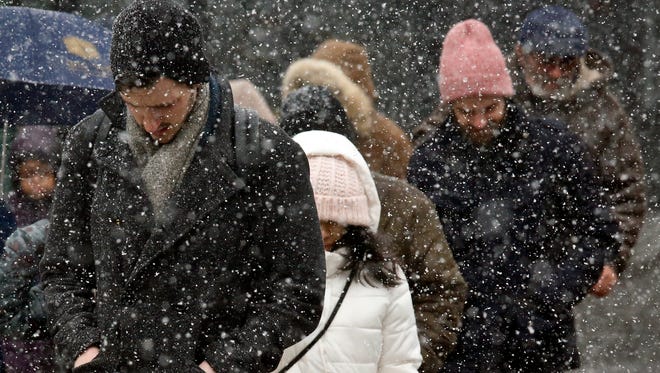Is Stella a weather bomb?

Winter Storm Stella may undergo bombogenesis Monday evening into Tuesday evening, the Weather Channel said — an ominous-sounding term frequently used in the winter to describe powerful storms that intensify rapidly.
The word is a combination of cyclogenesis, which describes the formation of a cyclone or storm, and bomb, which is, well, pretty self-explanatory.
Basically, it means a storm that rapidly intensifies as its center moves out over the ocean, such as what this snowstorm is forecast to do. The storm currently in the Midwest will weaken as it nears the East Coast and then "transfer" its energy to become a much more potent storm.
Winter Storm Stella is bearing down: What you need to know
Bombogenesis typically occurs between a cold continental air mass and warm ocean waters, according to meteorologist Jeff Haby.
Blizzard conditions can occur, sometimes accompanied by lightning as the system is "bombing out," the Weather Channel said.
In the 1940s, some meteorologists began informally calling some big coastal storms "bombs" because they develop "with a ferocity we rarely, if ever, see over land," said Fred Sanders, a retired MIT professor, who brought the term into common usage by describing such storms in a 1980 article in the journal Monthly Weather Review.
Bombogenesis is said to occur when a storm's central barometric pressure drops at least 24 millibars in 24 hours. (A millibar is a way of measuring air pressure.) The lower the pressure, the more powerful the storm.
Many nor'easters — big storms that wallop the East Coast — are the product of bombs, Haby says. The contrast in temperature between polar air spilling over the eastern U.S. and the relatively warm Gulf Stream waters sets the stage for cyclogenesis on the boundary between these air masses.